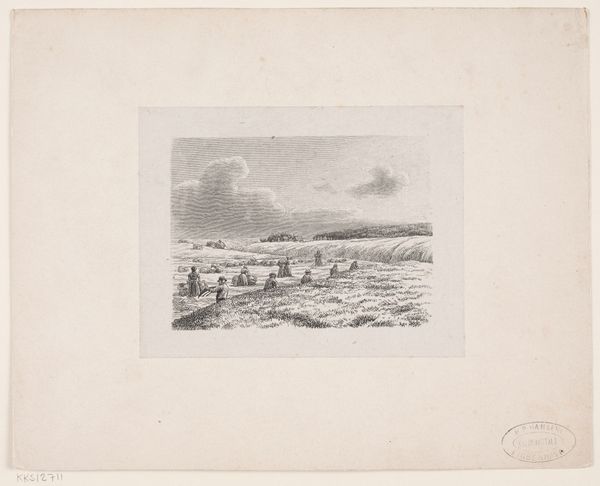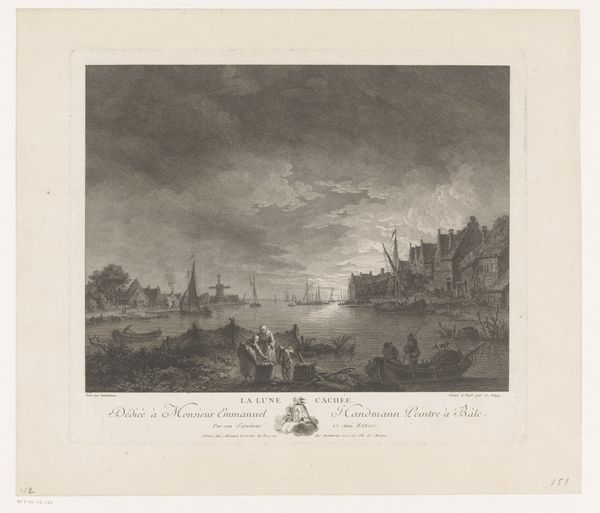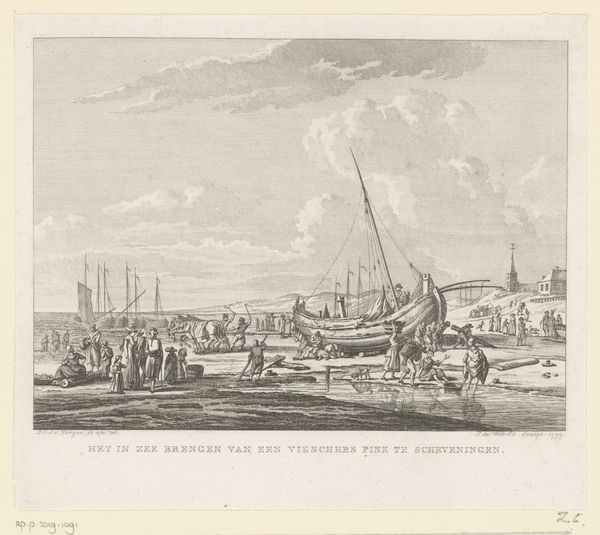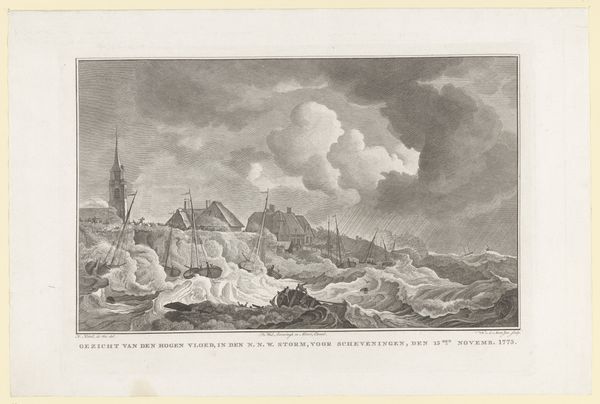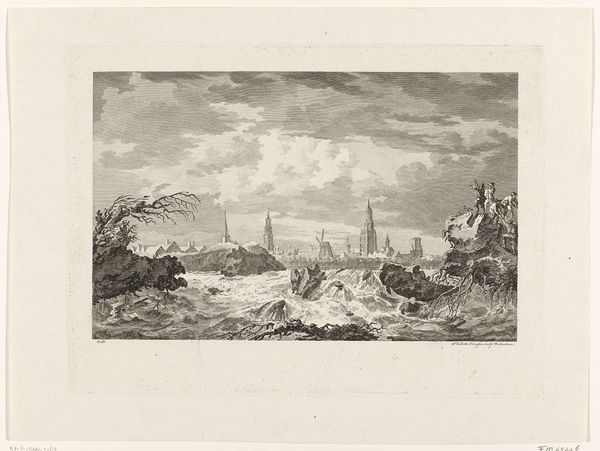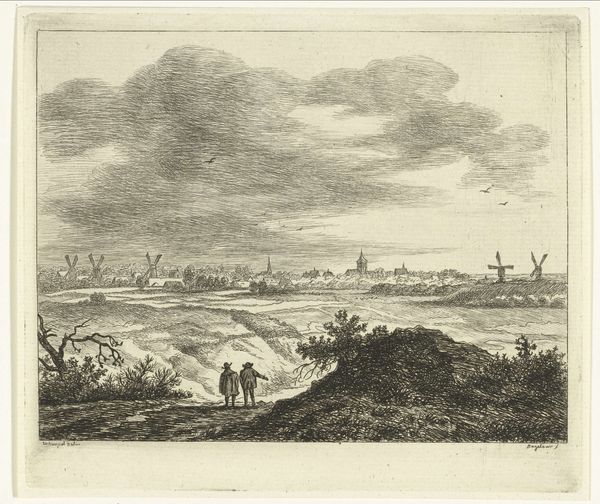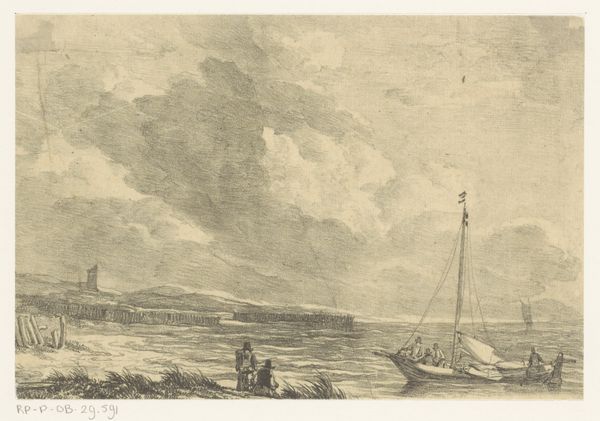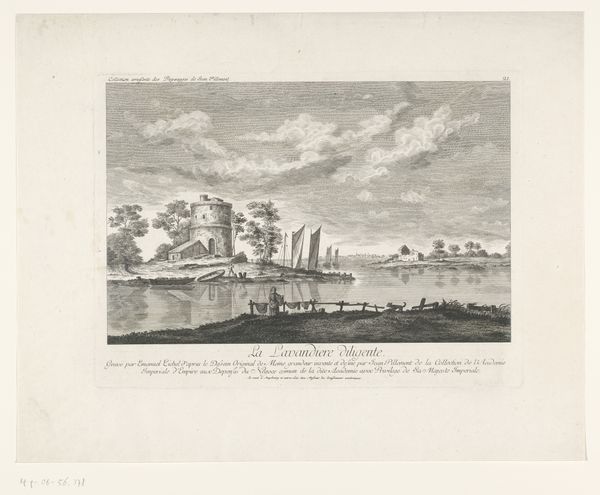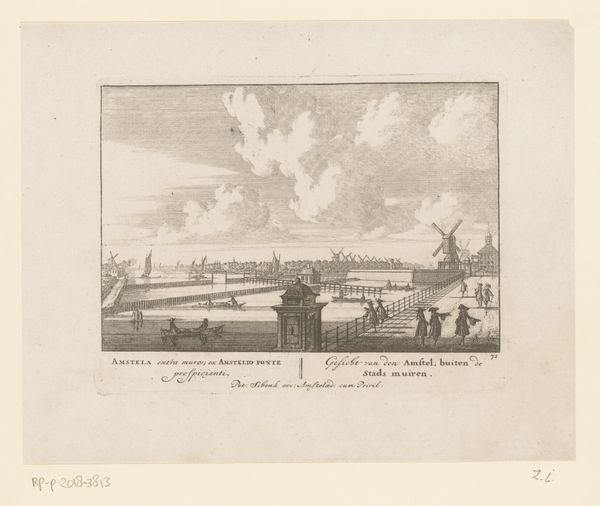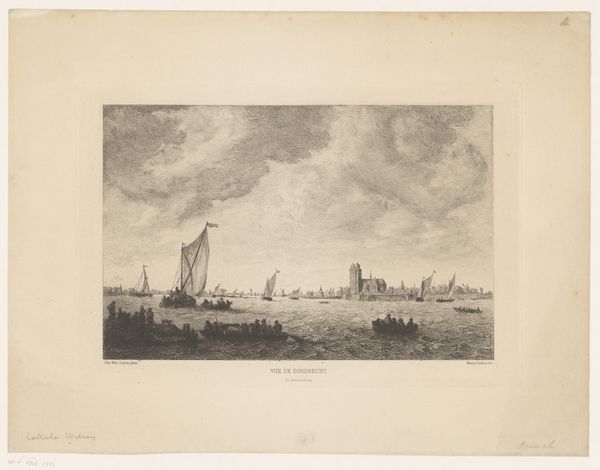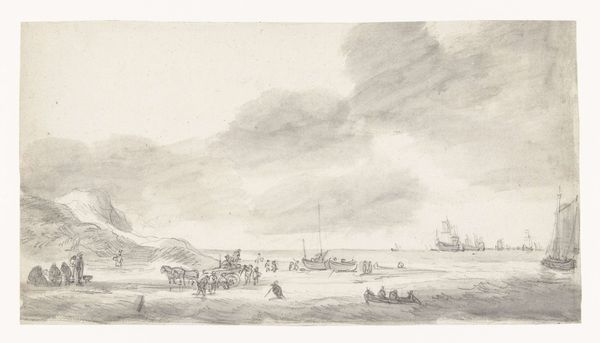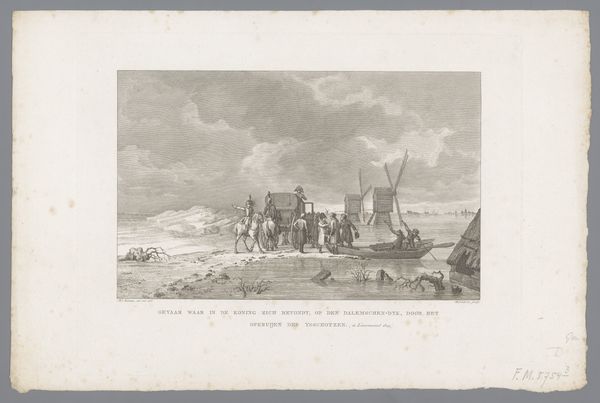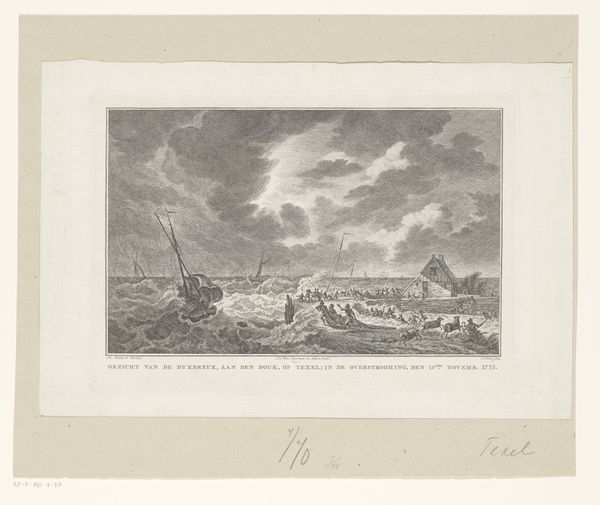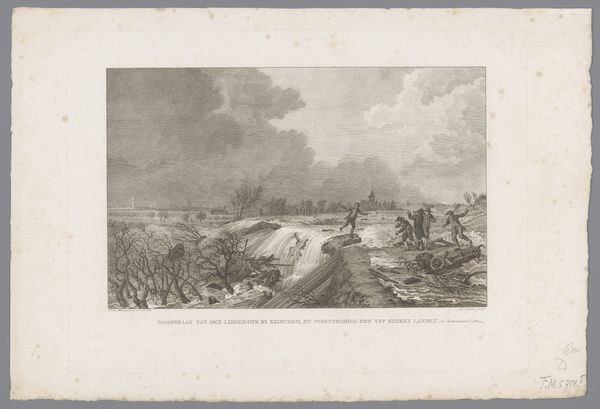
print, engraving
# print
#
old engraving style
#
landscape
#
genre-painting
#
engraving
#
rococo
Dimensions: height 376 mm, width 495 mm
Copyright: Rijks Museum: Open Domain
Editor: We're looking at "View of the Beach at Egmond-aan-Zee," a print made in 1751 by Jacques Philippe Le Bas, currently at the Rijksmuseum. It's got a real peaceful vibe, but there's also a sense of work happening. How do you interpret this scene? Curator: The first thing that strikes me is how this idyllic landscape actually portrays a very specific socio-economic reality. Consider the position of the fishing community during the Rococo period. Their livelihood depended on the sea's bounty, yet they often faced marginalization and hardship. Do you see how the artist, through depicting daily life, subtly brings these issues into view? Editor: I guess I hadn't thought about that. I was just looking at the composition – the balance between land and sea, the figures dotting the shoreline. Curator: Exactly. It's vital to consider those elements! Le Bas is creating more than just a pretty picture; he's illustrating a particular moment in Dutch history, complete with class structures. The figures themselves aren't just generic placeholders. How are gender dynamics also at play in this community? What labor are each of the figures engaged in? Editor: It does make me consider whose story is actually being centered, right? Are we romanticizing labor, or trying to understand the people who rely on it? Curator: Precisely! It’s this constant questioning of representation, coupled with historical awareness, that allows us to unearth the complex narratives woven within seemingly simple images. It becomes an entry point to bigger conversations around class, gender, and even ecological sustainability in their relationship to labour! Editor: That really changes how I see it. I am now appreciating it as a record of both aesthetic skill and social conditions. Thank you. Curator: And thank you. This is a good reminder that every piece of art has layers of context, that the history of marginalized communities can reveal profound stories about power, survival and dignity.
Comments
No comments
Be the first to comment and join the conversation on the ultimate creative platform.
